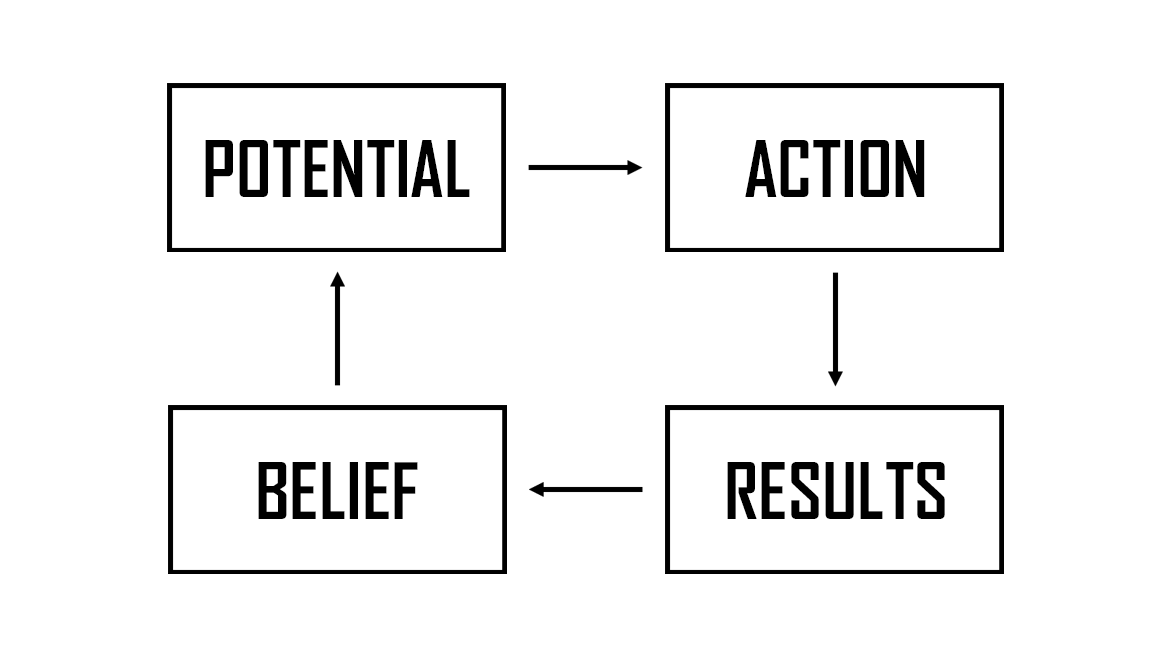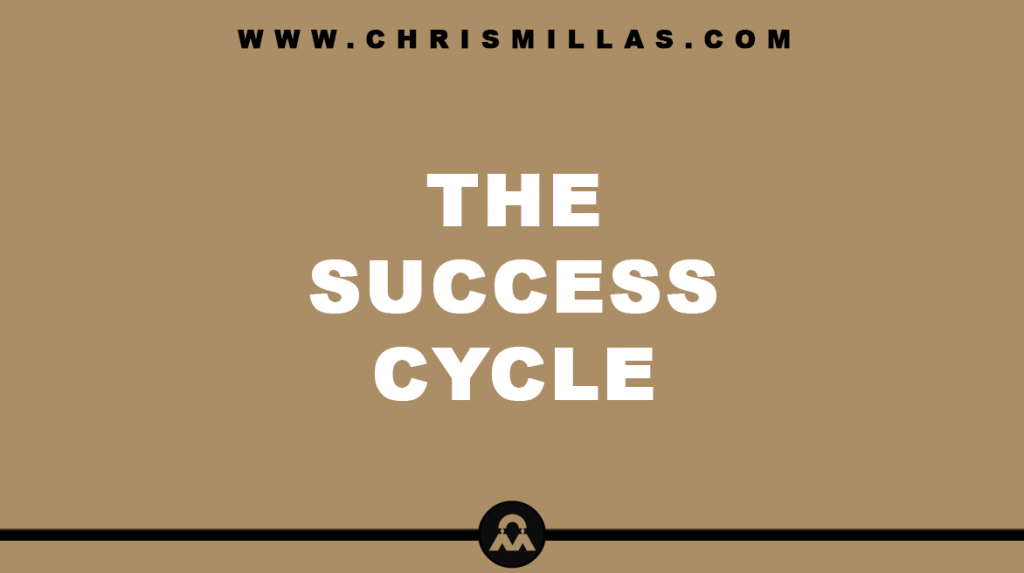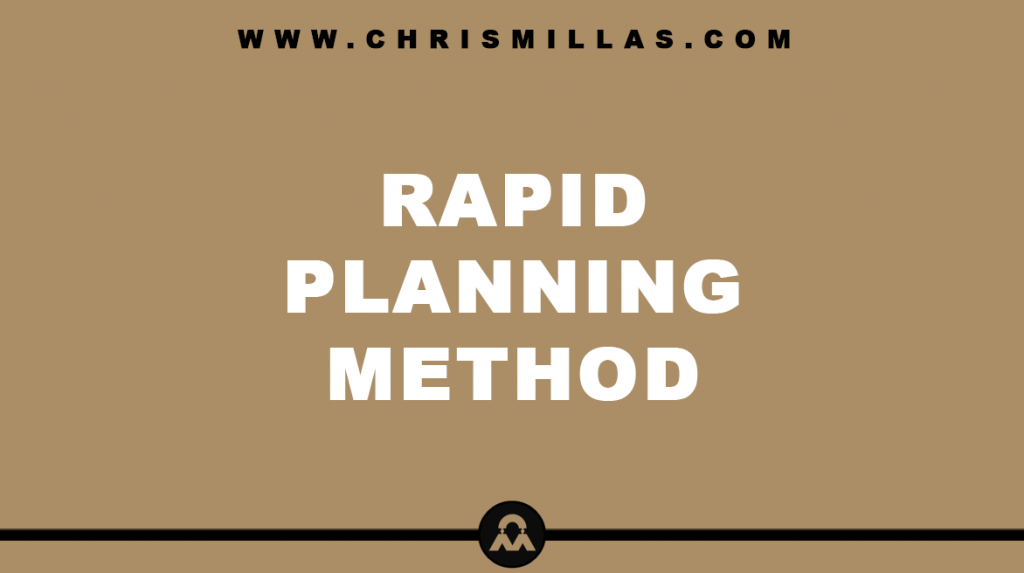In this post we’ll unpack all you need to know about the Success Cycle, defining exactly what it is, a breakdown of the four stages of the cycle, how we can leverage it for success and more.
What Is The Success Cycle?
The Success Cycle provides us with a universal formula for success. It demonstrates why successful people tend to become more successful, why the rich get richer and the poor get poorer and why happy people become more happy.
“People who succeed have momentum. The more they succeed, the more they want to succeed, and the more they find a way to succeed. Similarly, when someone is failing, the tendency is to get on a downward spiral that can even become a self-fulfilling prophecy.” ― Tony Robbins
The Four-Minute Mile
Pre-1954, experts asserted that the human body was simply not capable of running a mile in under four minutes. Not only was it apparently dangerous, but it was also impossible.
However, on 6th May 1954, Roger Bannister broke the four-minute barrier, recording a time of 3:59.4 to become the first man to run a sub four-minute mile. Just 46 days later, John Landy broke the record again with a time of 3:57.9, becoming the second man to break the four-minute mile barrier. Within two years, 37 more men managed the same feat and thousands have since done the same. In fact, running a mile in under four minutes is the standard for all professional middle distance runners.
So what was it that lead to such a domino affect? What allowed Roger Bannister to break the four-minute mile was belief? The answer is the belief that he could.
Not only did Bannister break the time barrier, but he broke the psychological barrier ― the idea that, as the so called experts had claimed, running a mile in less than four minutes was impossible.
When Bannister’s competitors realised that it was possible, this raised their own belief which in turn allowed them to tap deeper into their potential. The mere fact that they knew it was possible produced within them a sense of certainty which motivated them to train harder and focus on achieving the feat themselves. This is a classic example of the Success Cycle.
The 4 Stages Of The Success Cycle
There are four distinct stages to the Success Cycle; Belief, Potential, Action and Results.
Our beliefs determine our potential, our potential determines out actions and our actions determine our results. The more belief we have, the more potential we tap into, the better actions we take and ultimately the better results we get.

Below we’ll unpack each of these four stages in more detail.
- Belief
Belief refers to the sense of certainty we have about what we can achieve.
We get what we expect. If we expect failure, we increase the likelihood that we will get failure. If we expect success, we increase the likelihood that we will get success.
When we don’t believe maximise our belief, we tend to exert less effort. Therefore, our level of certainty determines how much potential we can tap into.
- Potential
Human beings are extraordinary. We all have unlimited potential. We are all capable of success. Unfortunately however, most people only tap into a tiny amount of their true potential.
When we don’t maximise our potential, we instantly limit what we are capable of. Therefore, how much potential we tap into determines the actions we take.
- Action
When we tap into more of our potential, it follows that we will take more effective action. In contrast, when we tap into only a small amount of our potential, naturally we will take a small amount of action.
When we don’t maximise our action, we limit the types of results we can get. Therefore, how much action we take determines the results we get.
- Results
Our results simply reflect our original beliefs.
When we fail, it reaffirms our original belief that we were going to fail and so we are likely to have less belief the next time we do it. When we succeed, it reaffirms our original belief that we were going to succeed, which in turns gives us more belief and confidence the next time we do it. This is why competence creates confidence.
Therefore, the results we get determines how much belief we have in ourselves, thus forming a cycle.
“Success breeds confidence breeds success.”
Even Failure Can Lead To Success
It goes without saying that even affirmative beliefs cannot guarantee the results we want. In fact, we all experience at times results that we weren’t envisioning. However, history illustrates that the most successful people not only don’t let their failures affect their beliefs, but they use their failures as fuel to drive them to get better results.
Summary
The Success Cycle provides us with a model for the cycle of success. It explains the momentum behind why success breeds success and failure breeds failure.
The first step to increasing our success is first becoming aware of the different stages and then maximising the potential of each stage. When we do this, we ultimately maximise our results.







